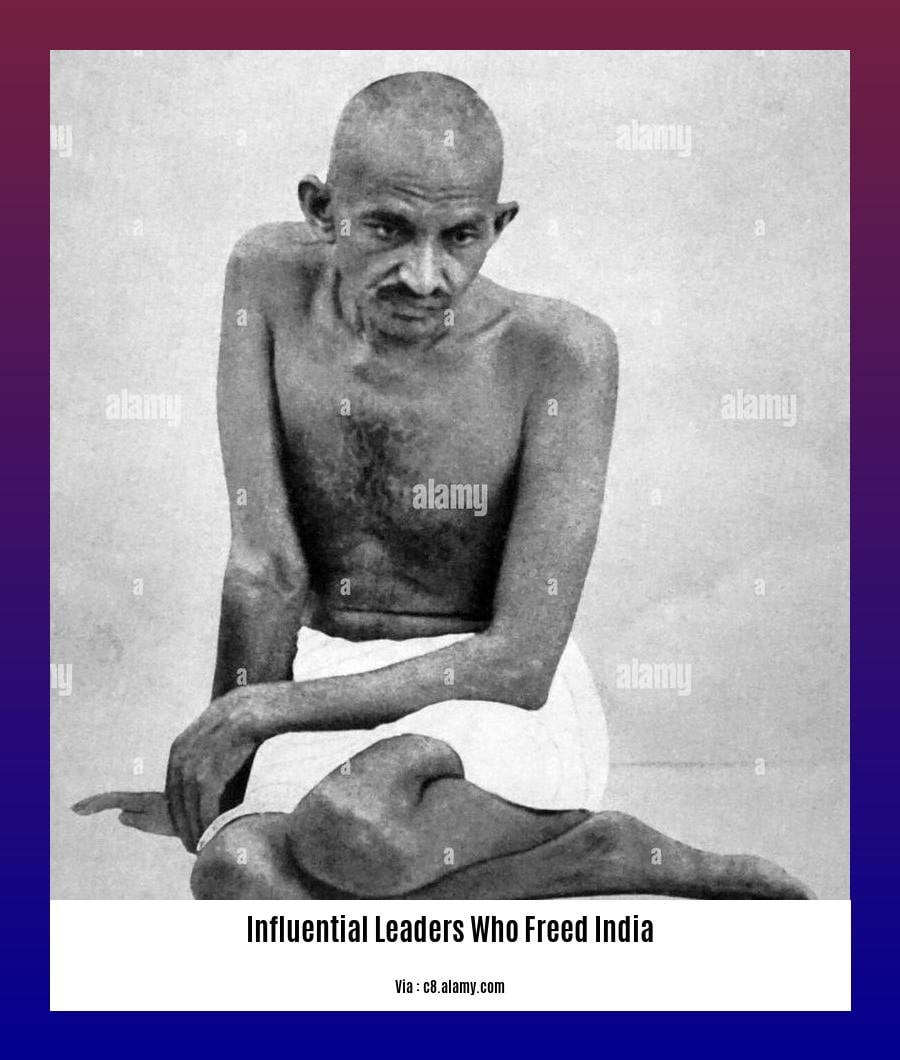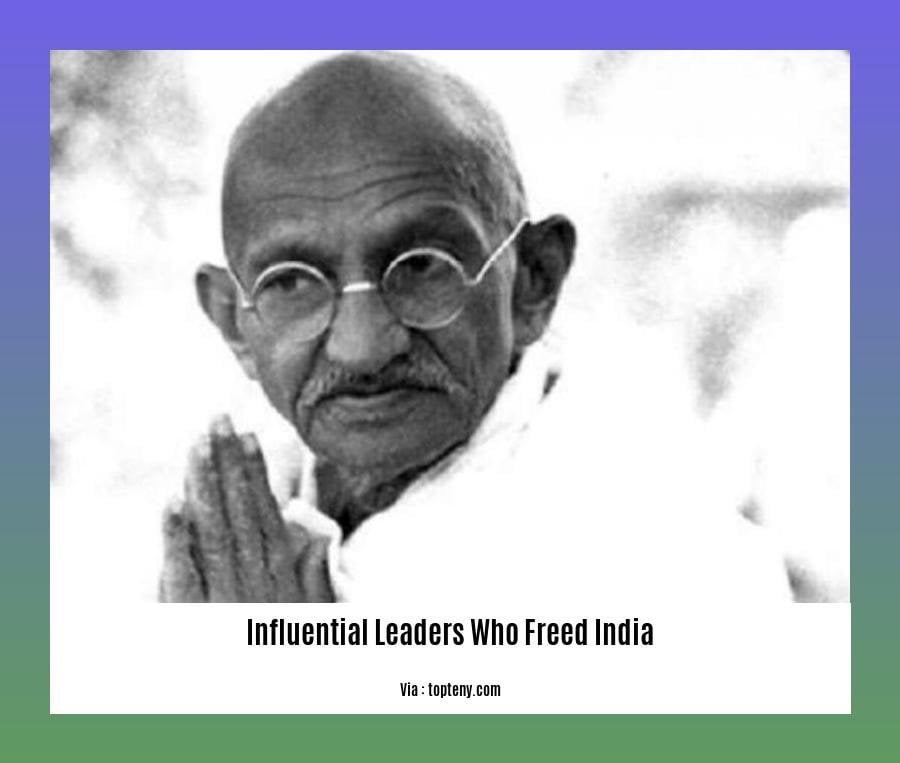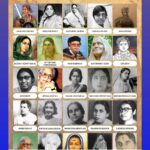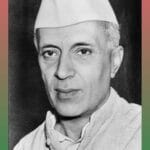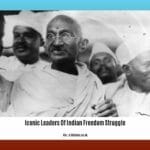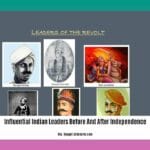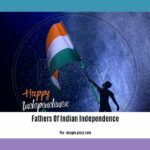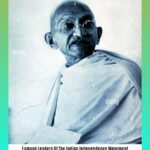Embark on a historical odyssey as we explore the extraordinary lives of the influential leaders who spearheaded India’s independence movement, [The Influential Leaders Who Freed India]. Their unwavering determination, strategic brilliance, and unwavering commitment to social justice ignited a revolution that liberated a nation and inspired countless others.
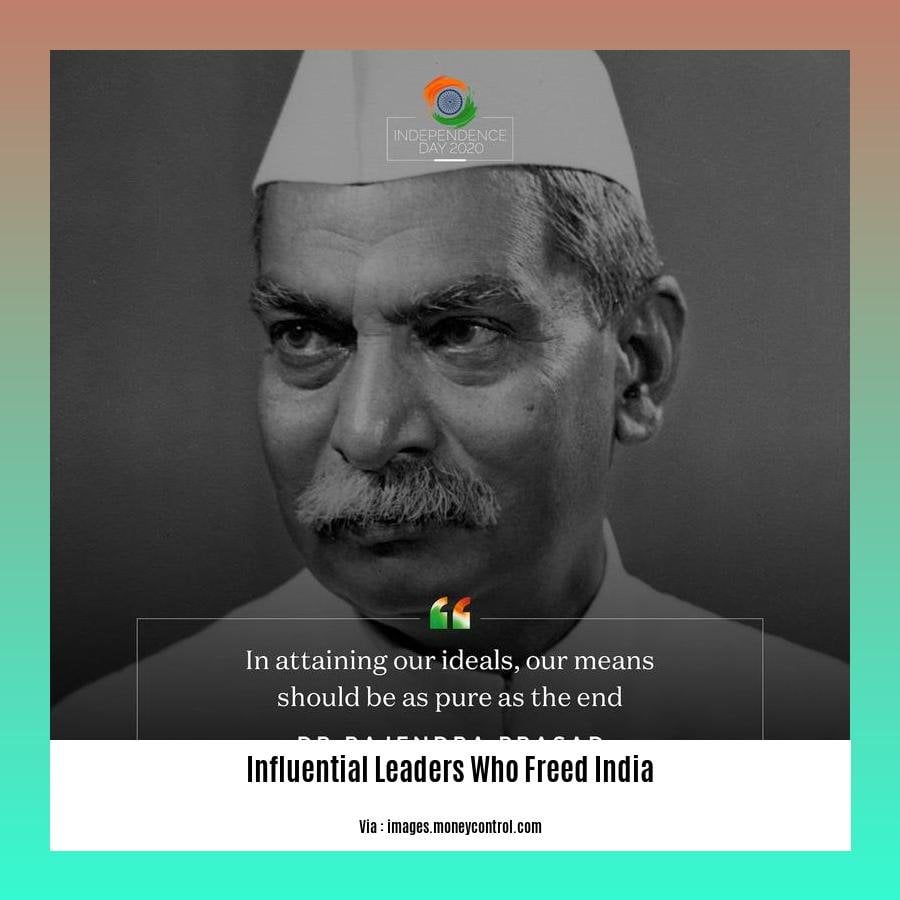
Key Takeaways:
- Mahatma Gandhi led the independence movement using nonviolent resistance.
- Jawaharlal Nehru became India’s first Prime Minister.
- Sardar Vallabhbhai Patel played a vital role in integrating India after independence.
- Tantia Tope and Nana Sahib led the 1857 rebellion against British rule.
- Bhagat Singh and Subhas Chandra Bose were influential revolutionaries who fought for India’s freedom.
- The Indian National Congress was instrumental in the independence movement for decades.
- The Indian Rebellion of 1857 marked a significant uprising against British rule.
- World War I and the Non-cooperation Movement contributed to growing nationalist sentiments.
- The Quit India Movement demanded immediate independence.
- India gained its independence on August 15, 1947, after many years of struggle.
Influential Leaders Who Freed India
When we think of Indian independence, a few names inevitably come to mind. These influential leaders who freed India played a pivotal role in shaping the nation’s destiny.
Their strategies varied, but they shared a common goal: to break free from colonial rule. From Mahatma Gandhi’s nonviolent resistance to Subhas Chandra Bose’s armed struggle, these leaders employed diverse tactics to achieve their shared vision.
Key Figures
Mahatma Gandhi: The towering figure of the Indian independence movement. His nonviolent philosophy and unwavering determination inspired millions.
Jawaharlal Nehru: The first Prime Minister of India. A brilliant orator and visionary statesman, he guided India through its formative years.
Sardar Vallabhbhai Patel: The “Iron Man of India,” instrumental in integrating the princely states into the Indian Union.
Bhagat Singh: A revolutionary who became a symbol of resistance against British rule. His sacrifice at a young age continues to inspire countless Indians.
Organizations and Movements
Indian National Congress: The primary political organization leading the independence movement for over six decades.
Muslim League: Advocated for the interests of Muslims in India. Its demand for a separate Muslim state ultimately led to the partition of the country.
Indian Rebellion of 1857: A widespread uprising that marked the beginning of organized resistance against British rule.
The Path to Independence
The road to Indian independence was long and arduous. It involved countless sacrifices and tireless efforts by numerous individuals and organizations. The influential leaders who freed India played a pivotal role in this historic struggle. Their legacy continues to inspire and guide the nation to this day.
Intrigued by the sacrifices and struggles of the legendary Indian freedom fighters? Dive into the extraordinary lives of the famous leaders of the Indian independence movement who played a pivotal role in shaping India’s destiny.
Unveiling the remarkable stories of the fathers of Indian independence, this comprehensive article will shed light on their tireless efforts and unwavering dedication to the cause of freedom.
Subhas Chandra Bose and his militant approach to independence
Subhas Chandra Bose, also known as Netaji (“Respected Leader”), was a prominent figure in India’s independence movement. He initially joined Mohandas Gandhi’s noncooperation movement but later clashed with Gandhi’s conservative policies.
Bose advocated for a more militant approach to independence and was critical of Gandhi’s focus on non-violence. He believed that armed resistance was necessary to overthrow British colonial rule.
During World War II, Bose collaborated with Nazi Germany and Japan in an attempt to gain support for India’s independence. He led the Indian National Army (INA) and fought against the British in Burma.
Bose remains a controversial figure in Indian history due to his nationalist and authoritarian views.
Key Takeaways:
- Subhas Chandra Bose was a prominent figure in India’s independence movement.
- He advocated for a more militant approach to independence than Mahatma Gandhi.
- Bose collaborated with Nazi Germany and Japan during World War II.
- He led the Indian National Army and fought against the British in Burma.
- Bose remains a controversial figure in Indian history.
Citation:
– Facts about Subhas Chandra Bose from Encyclopedia Britannica
Sardar Vallabhbhai Patel and his role in unifying India
Sardar Vallabhbhai Patel, aptly known as the “Iron Man of India,” played an instrumental role in unifying the nation after independence and stands tall as a stalwart figure in India’s freedom struggle. As India’s first Deputy Prime Minister and Home Minister, Patel embarked on an extraordinary mission to integrate over 550 princely states into the Indian Union, preventing its fragmentation and safeguarding its territorial integrity. It was a herculean task, fraught with challenges, but Patel’s unwavering determination, astute diplomacy, and strategic maneuvering ensured India’s emergence as a united nation.
Patel’s approach was multifaceted, combining diplomacy, persuasion, and, when necessary, force. He engaged in negotiations, skillfully convincing rulers to accede to the Indian Union. However, in cases where diplomacy failed, Patel did not hesitate to use military force to quell resistance and ensure the integration of these states. His firm but fair approach earned him both respect and admiration, cementing his legacy as a master statesman and nation-builder.
To address the concerns of the former royal families, Patel introduced the concept of “privy purses,” a form of compensation for their accession to India. This pragmatic move helped smooth the transition and eased the integration process.
This was just a brief glimpse into the remarkable life and contributions of Sardar Vallabhbhai Patel. We honor his legacy, recognizing his unwavering commitment to India’s unity and his exceptional leadership that shaped the destiny of our nation.
Key Takeaways:
- Patel integrated over 550 princely states into the Indian Union, preventing fragmentation.
- His approach involved a combination of diplomacy, persuasion, and force.
- Patel introduced “privy purses” to compensate former royal families.
- He played a pivotal role in ensuring India’s territorial integrity and unity.
Most Relevant URL Source:
Muhammad Ali Jinnah and His Leadership of the Muslim League
Muhammad Ali Jinnah, a prominent leader during the Indian independence movement, played a pivotal role in the creation of Pakistan as a separate nation for Muslims. His leadership of the Muslim League was instrumental in shaping the course of India’s history.
Jinnah’s journey began with his involvement in the Indian National Congress, where he initially advocated for Hindu-Muslim unity. However, as tensions between the two communities grew, Jinnah became disillusioned with the Congress’s perceived favoritism toward Hindus.
In 1940, he formally proposed the creation of a separate Muslim state, Pakistan, through the Lahore Resolution. This resolution marked a turning point in the Indian independence movement, leading to the eventual partition of India into two separate nations: India and Pakistan.
Jinnah’s leadership was crucial in mobilizing Muslim support for the Pakistan movement. He emphasized the need for a separate Muslim state to protect the rights and interests of the Muslim community in British India.
His efforts culminated in the formation of Pakistan in 1947, with Jinnah becoming its first Governor-General. His vision for Pakistan was a secular state where Muslims and minorities could coexist peacefully.
Key Takeaways:
- Muhammad Ali Jinnah was a prominent leader of the Muslim League.
- He played a crucial role in the создание Pakistan as a separate Muslim state.
- Jinnah’s leadership was instrumental in shaping the course of India’s independence.
Most Relevant URL Source:
- Muhammad Ali Jinnah: The Father of Pakistan
